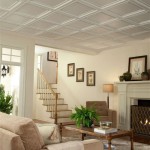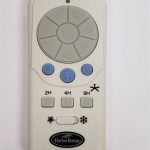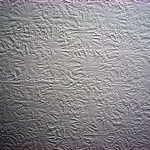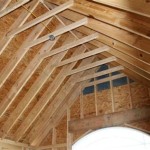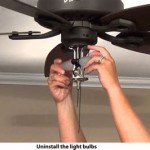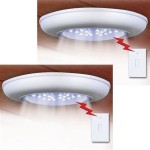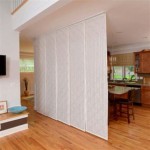Can I Use Beadboard for a Ceiling? A Comprehensive Guide
Beadboard, characterized by its distinctive vertical grooves and beaded detailing, is a popular material often associated with wainscoting and wall paneling. Its aesthetic versatility lends itself to various interior design styles, from traditional to coastal. A common question arises: can beadboard be used on ceilings? The answer is generally yes, but its suitability depends on several factors related to structural integrity, installation methods, aesthetic considerations, and the specific environment in which it will be installed.
This article will explore the feasibility of using beadboard on ceilings, outlining the advantages and disadvantages, addressing essential installation considerations, and providing insights into different types of beadboard suitable for ceiling applications. Understanding these aspects will enable informed decisions regarding the use of beadboard as a ceiling treatment.
Assessing the Suitability of Beadboard for Ceilings
Before committing to a beadboard ceiling, it is crucial to evaluate the existing ceiling structure and environmental conditions. Several factors play a significant role in determining whether beadboard is a suitable material for a given ceiling application.
First, the existing ceiling's structural integrity is paramount. The ceiling joists or framing must be able to support the added weight of the beadboard. If the existing structure is weak or unstable, reinforcing it is essential before installing any ceiling treatment, including beadboard. Sagging ceilings or evidence of water damage should be addressed before proceeding with any installation.
Second, consider the room's humidity levels. Beadboard, especially when made from wood or medium-density fiberboard (MDF), can expand and contract with changes in humidity. In high-humidity environments, such as bathrooms or kitchens, moisture-resistant options like PVC beadboard are preferred to prevent warping, swelling, or mold growth. Adequate ventilation in these areas is also important to mitigate moisture-related issues.
Third, assess the desired aesthetic. Beadboard can create a visually appealing ceiling, adding texture and character to a room. However, its pronounced vertical lines may not complement all architectural styles. Consider the room's dimensions and existing design elements to ensure that a beadboard ceiling aligns with the overall aesthetic.
Fourth, consider the ease of access to utilities. The ceiling often houses electrical wiring, plumbing, and HVAC systems. Installing beadboard may complicate future access for maintenance or repairs. Planning for access panels or removable sections can mitigate this issue. Furthermore, be aware of any building codes regarding ceiling materials in relation to electrical systems and fire safety.
Beadboard Materials: Options and Considerations
Beadboard is available in various materials, each with its own advantages and disadvantages for ceiling applications. The choice of material should be based on the room's environment, budget, and desired aesthetic.
Wood Beadboard: Solid wood beadboard offers a classic and authentic look. It can be stained or painted to match any décor. However, wood is susceptible to moisture damage and may warp or crack in high-humidity environments. Proper sealing and finishing are essential to protect it from moisture. Wood beadboard can be more expensive than other options.
MDF Beadboard: Medium-density fiberboard (MDF) beadboard is a more cost-effective alternative to solid wood. It is less prone to warping and cracking than solid wood but is still susceptible to moisture damage. Priming and painting MDF beadboard thoroughly is crucial, especially in damp environments. MDF is a stable material, providing a smooth surface for painting.
PVC Beadboard: Polyvinyl chloride (PVC) beadboard is a synthetic material that is highly resistant to moisture, making it an excellent choice for bathrooms, kitchens, and other high-humidity areas. It is also resistant to rot, mold, and insects. PVC beadboard is lightweight and easy to install. However, it may not have the same natural aesthetic as wood or MDF. It is often available in a limited range of colors and finishes.
Fiberglass Beadboard: Fiberglass beadboard is another moisture-resistant option. It is lightweight, durable, and resistant to warping, cracking, and rot. Fiberglass is also fire-resistant, making it a safe choice for ceiling applications. However, it can be more expensive than other options.
When selecting a beadboard material, consider the specific needs of the room and the desired aesthetic. Moisture resistance is a crucial factor in many applications, particularly in bathrooms and kitchens. Budget and aesthetic preferences will also influence the choice of material.
Installation Techniques and Best Practices
Proper installation is essential for a successful beadboard ceiling. The installation process will vary depending on the type of beadboard and the existing ceiling structure. However, some general principles apply to all beadboard ceiling installations.
Surface Preparation: Before installing beadboard, ensure that the existing ceiling is clean, dry, and level. Repair any cracks or damage to the ceiling surface. If the ceiling is uneven, furring strips may be necessary to create a level surface for the beadboard. The furring strips are typically attached perpendicular to ceiling joists.
Acclimation: If using wood or MDF beadboard, allow the material to acclimate to the room's temperature and humidity for several days before installation. This will help minimize expansion and contraction after installation.
Cutting and Fitting: Accurate measuring and cutting are crucial for a professional-looking beadboard ceiling. Use a sharp saw to cut the beadboard panels to size. Ensure that the panels fit snugly against each other and against the walls. Leave a small expansion gap along the walls to accommodate any movement due to temperature or humidity changes. This gap will be covered by trim.
Attachment Methods: Beadboard can be attached to the ceiling using various methods, including nails, screws, and adhesives. The choice of attachment method will depend on the type of beadboard and the ceiling structure. For wood or MDF beadboard, using a combination of construction adhesive and finishing nails is common. PVC beadboard can often be installed with adhesive alone, but screws may be necessary for added security. Ensure that the fasteners are long enough to penetrate the ceiling joists or framing.
Panel Orientation: Consider the orientation of the beadboard panels. Typically, the panels are installed parallel to the longest dimension of the room. However, alternative orientations can create different visual effects. Consider the room's shape and size when determining the panel orientation.
Finishing and Trim: After installing the beadboard, fill any nail holes or gaps with wood filler. Sand the surface smooth and apply a primer. Paint or stain the beadboard to match the desired color scheme. Install trim along the edges of the ceiling to conceal any gaps and create a finished look. Crown molding or other decorative trim can add visual interest.
Safety Precautions: Always wear safety glasses and a dust mask when cutting or sanding beadboard. Use appropriate tools and equipment for the installation. If working at heights, use a sturdy ladder or scaffolding. Consider hiring a professional installer if you are not comfortable with the installation process.
By following these installation techniques and best practices, a durable and aesthetically pleasing beadboard ceiling can be achieved. Accurate measurements, proper surface preparation, and secure attachment are essential for a successful installation.
Ultimately, the decision to use beadboard on a ceiling involves a careful assessment of existing conditions, material selection, and adherence to proper installation techniques. While beadboard offers a unique aesthetic appeal, its suitability hinges on factors related to structural support, moisture resistance, and overall design coherence.

Diy Beadboard Ceiling Tutorial Easy And Inexpensive Custom Treatment

How To Install A Beadboard Ceiling Pine And Prospect Home

Beadboard Ceiling Panels Ceilings Armstrong Residential

How To Install A Beadboard Ceiling Pine And Prospect Home

Diy Beadboard Ceiling Tutorial Easy And Inexpensive Custom Treatment

How To Install Beadboard Panels On A Ceiling And Why We Ll Never Do It Again The Lake Land

9 Beadboard Ceiling Design Ideas Allura Usa

How To Install Beadboard Panels On A Ceiling And Why We Ll Never Do It Again The Lake Land

Beadboard Ceiling What It Is And How To Install Yourself
A Better Alternative To Wood Beadboard For Exterior Porch Ceilings Allura Usa
Related Posts

